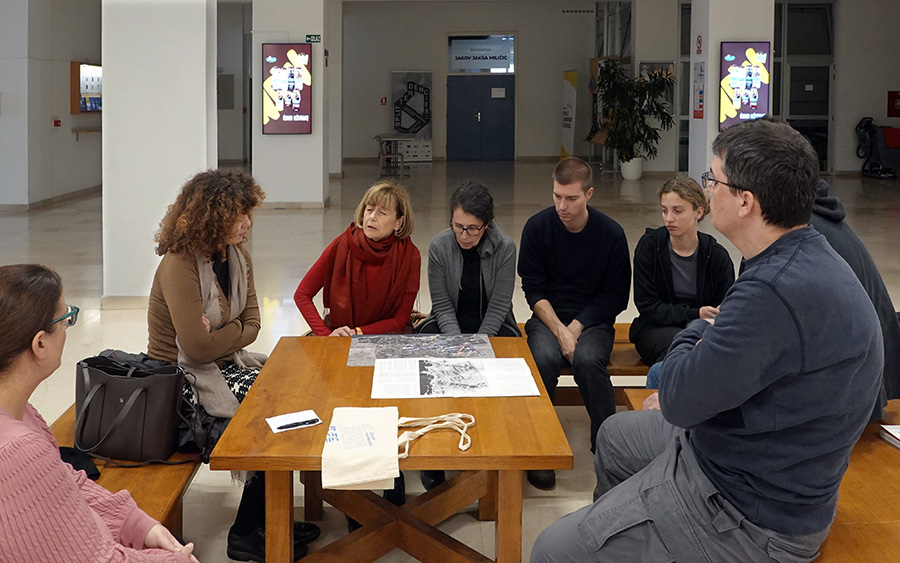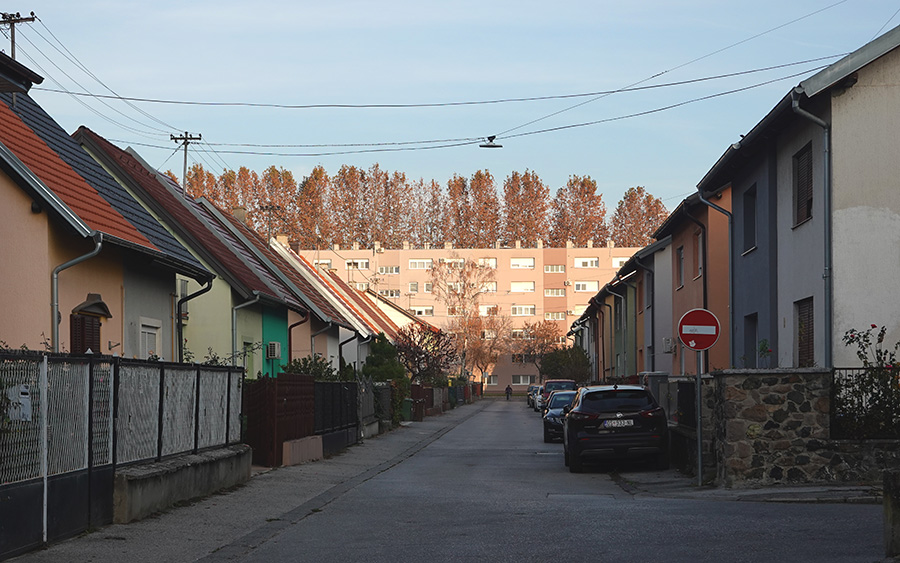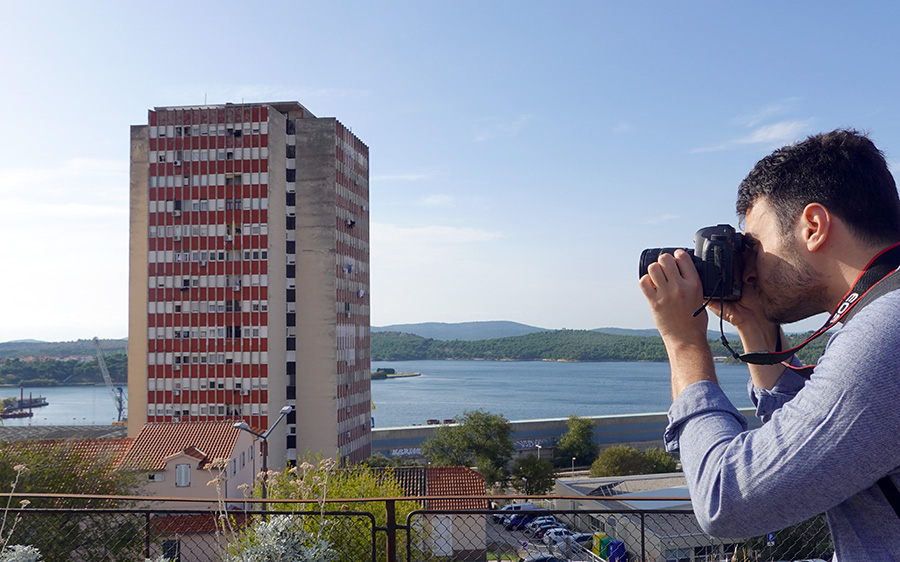Housing.Yu Team Explores Modernist Residential Architecture of Slavonia and Dalmatia
From 13 to 18 November 2025, members of the research team of the ERC project Housing.Yu – “The Right to Housing: The Production of Everyday Living Space in Yugoslavia (1945–1991)” undertook a study trip through Slavonia and Dalmatia, visiting Osijek, Borovo Naselje, Slavonski Brod, Lički Osik, Zadar, Šibenik, Split and Ogulin.
The focus of the tour was residential construction from the interwar period and from socialist Yugoslavia – ranging from planned individual housing and standalone multi-apartment buildings to collective housing estates.
In Osijek, the team visited the historic city centre, Blok Centar, the Moša district, the Sjenjak housing estate, Vijenac Ivana Meštrovića (formerly Borisa Kidriča), the so-called Pavelić settlement, the Jug II neighbourhood, and the building of the Faculty of Civil Engineering and Architecture. The tour was guided by Prof. Dina Stober, PhD (Faculty of Civil Engineering and Architecture Osijek) and architect Luka Hornung (Faculty of Civil Engineering and Architecture Osijek; Institute of Art History). In Slavonski Brod, the team toured the Franjo Sertić housing estate (today Andrija Hebrang), the Đuro Salaj Cultural Centre, residential buildings by architects Velimir Ručević and Hinko Bauer, the department store designed by Milivoj Peterčić, and the workers’ settlement of the Đuro Đaković factory, guided by Lidija Butković Mićin. During the Slavonia segment, the team also visited Borovo Naselje.
En route to Dalmatia, the team explored Lički Osik. Their introduction to Zadar’s residential architecture began with a conversation with architect and academician Nikola Bašić, author of typologically innovative apartment buildings in the Bili brig neighbourhood from the 1980s and early 1990s, which were visited after the discussion. The team also toured modernist residential buildings on the Zadar peninsula.
The visit to Šibenik was organised with expert guidance from Dario Crnogaća and Iva Petković Pavić of the Šibenik Architects’ Association, and Ana Selak from the Conservation Department of the Ministry of Culture and Media in Šibenik. The tour included residential buildings along King Zvonimir Street and Stjepan Radić Street (by architects Ante Vulin, Ivan Vitić, Mirko Marasović and Dinko Vesanović), as well as buildings known as Dedinje, Bermude, and the Red and Blue skyscrapers. The team also visited the Krvavice residential quarter and the Vidici and Šubićevac housing estates. The visit concluded with a discussion with urban planner Gustav Červar, a key figure in the city’s modernist urban development.
In Split, the Faculty of Civil Engineering, Architecture and Geodesy (FGAG) hosted a public conversation with contemporaries Dinko Kovačić (architect, Split 2 and 3), Tonko Mladina (architect, Split 3), and Eduard Katačić (urban planner, Split). The event was co-organised by Sanja Matijević Barčot, PhD (FGAG Split), who also led the team through Split 2 and its residential buildings designed by Vuko Bombardelli, Ivan Vitić, Frane Gotovac and Stanko Fabris. A guided tour of Split 3 was organised with architects Jelena Borota and Višnja Kukoč.
On the return from Dalmatia, the team visited modernist residential buildings in Ogulin – specifically, the buildings on Vijenac Ive Marinkovića, designed by architect Mihajlo Kranjac.
Participants in the Slavonia segment included Tamara Bjažić Klarin, project leader, and team members Lidija Butković Mićin, Hana Bečeić, Antun Dulibić and Frano Petar Zovko. The Dalmatia segment also included Igor Duda, while Marija Jurić joined the team in Split.
-
Contact: Tamara Bjažić Klarin
#HousingYu #ERCCog





